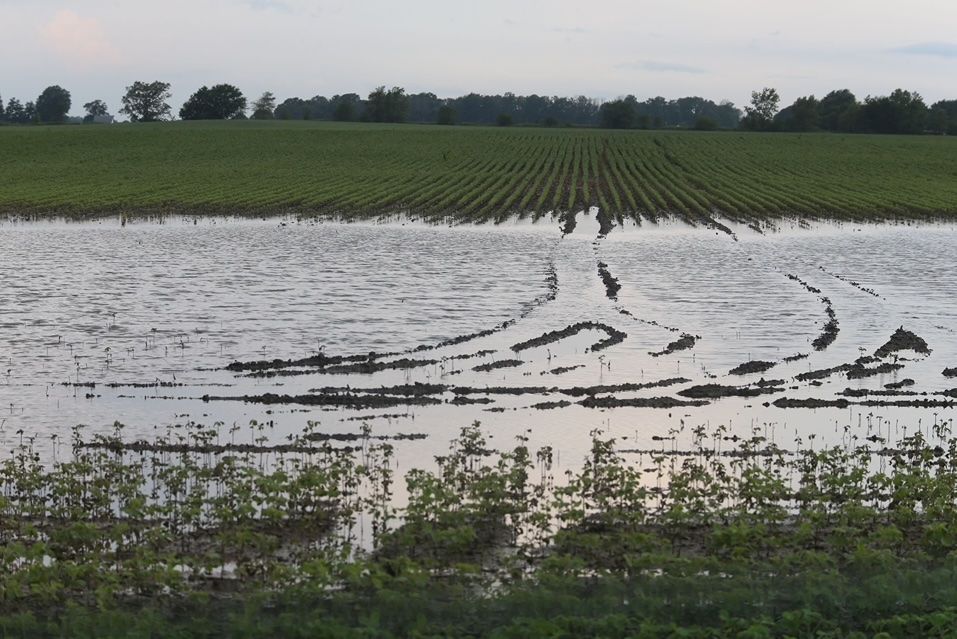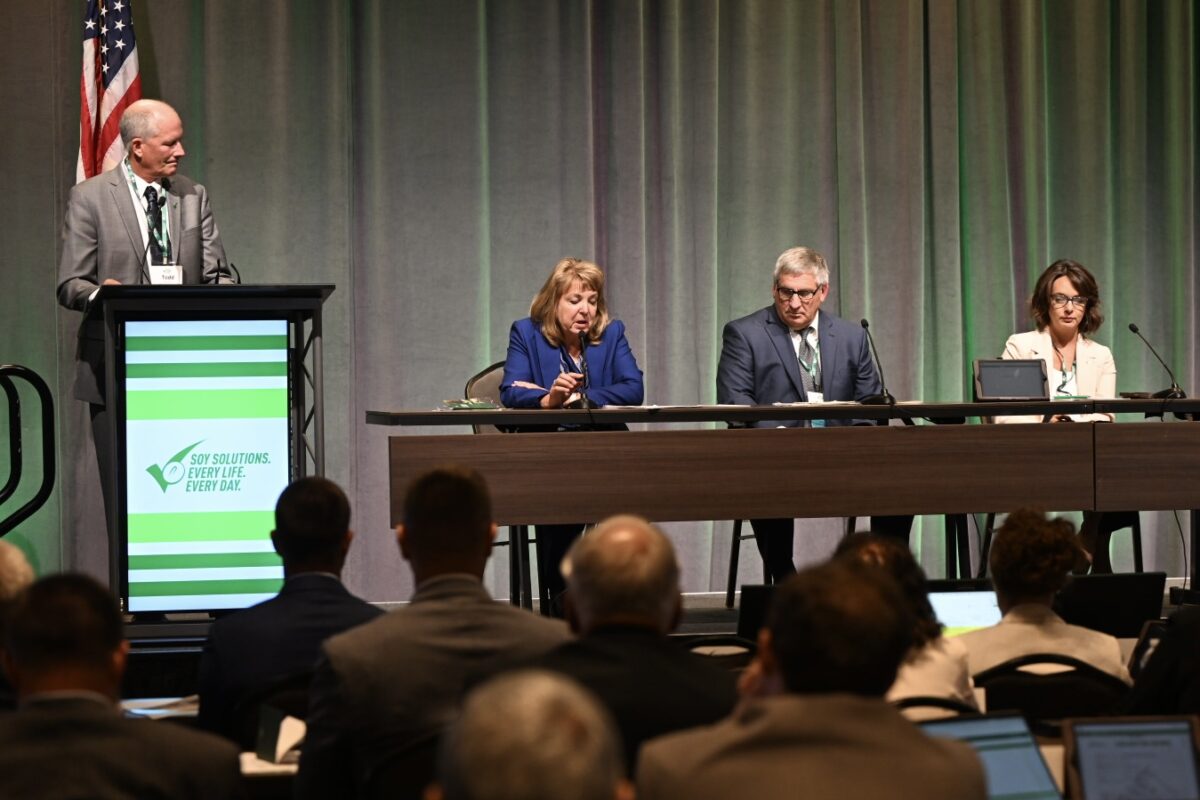Reaping the Benefits of Sowing Sustainability Investments

The puzzle pieces of AJ Hood’s southeast Arkansas farm all work together to support continuous, sustainable improvements on his operation. This program approach is a proactive way for Hood to make a positive impact on the environment and focus on delivering a profitable crop each season.
As a soybean farmer and a soy checkoff farmer-leader, Hood strongly identifies with the checkoff’s commitment to improve global sustainability.
Hood manages a large operation, where he oversees 11 other farmers. He works with these farmers to help them make the best management decisions for their farms each day. But they don’t just plan for the next season — they plan for the future.
“Most of my farmers, their kids farm with them. Their nephews farm with them. So we’re looking at the longevity of the farm,” Hood says. “We want to take care of the land to allow the next generation to take over.”
A Program Approach
Pest control and irrigation efficiency are two areas important to Hood’s strategic management of the operation. Both are research priorities critical to the future of Arkansas soybean production, according to the Soybean Research and Information Network, an effort funded in part by the soy checkoff to improve yields and profitability through university research and extension. Sustainability looks different on every farm, for every farmer. Here’s what Hood says is working on his farm.
Water management
Hood gets the most out of the water on his operation by using an irrigation system that picks up surface water collected in reservoirs. This allows him to get water to the plants when it’s needed. Not only that, but the irrigation pipes themselves are made out of recycled materials.
The checkoff funds research projects that provide support on how to maximize irrigation water use on farms. One of those projects, funded by the Arkansas Soybean Promotion Board in Hood’s home state, invites farmers to attend “irrigation school.”
One of the methods covered in the course is computerized hole selection, which regulates the size of the holes punched in poly irrigation pipes to increase water flow consistency and reduce damage. Hood implements this on his own farm by inputting factors such as row length and flow rate to determine the hole size that’s needed.
“Historically, we’ve always laid poly pipe and gone through and poked holes ourselves, which leaves different size holes,” Hood says. “This program helps calculate the size of hole we need to get an even flow through the pipe and reduces the pressure on the pipe, which minimizes the chance of it popping. This helps take human error out of the equation. Any time we can limit risk factors like that helps make us more efficient.”
Pest management
Working alongside entomologists from the University of Arkansas, Hood identified the thresholds for insects in his fields and uses those to make application decisions. Before he decides to apply any control measure, he confirms specific levels of infestation have been reached to indicate the risk is worth the investment in crop protection. Thresholds help him manage inputs, reducing the chance of over-application that ends in runoff into local waterways. Applying only after thresholds have been met is also an economical way for Hood to manage his input dollars. Resources from the checkoff-supported Take Action program help farmers like Hood identify the thresholds for insects in their fields.
Some of the other interconnected practices Hood and the farmers he works closely with successfully implement include:
Soil management
Hood works to ensure the soil and crops have the right balance of nutrients. He says they take soil samples every third year in order to see the bigger picture of the soil on the farm and create a variable rate nutrient application plan. This soil map shows areas of the field that are high or low in certain elements. Soil balance encourages healthy plant growth and also helps them mitigate the risk of those inputs running off into nearby waterways.
Hood is by no means the only farmer focused on precision application to manage his soil. In fact, the soy checkoff funds research projects so researchers like Shawn Conley, University of Wisconsin extension soybean and wheat specialist, can evaluate on-farm soil health measurements to help farmers better manage their soil. The checkoff understands continuous improvement through research and education like this can also increase farm longevity.
Precision technology
As a test plot facility for the University of Arkansas, Hood partners with the university to test technology before it hits the market on a larger scale. The research collaboration allows them to evaluate innovative practices to improve profitability and sustainability. He also says they put the data they collected the previous year to work, using it to make decisions for the following growing season.
Hood says checkoff investments provide valuable information and resources to farmers, and the research conducted through the checkoff adds value to his farm.
“The simple fact is, improvement comes from looking at different programs and finding ways that we can adapt them to our farm to be more sustainable,” Hood says. “The checkoff does a lot of the work to research the viability and impact of sustainable practices. Through its education and outreach, growers can learn more about what’s happening across the country and make better management decisions informed by the research they fund.”
Sustainability on the Farm and Beyond
The sustainability of each soybean farmer doesn’t just affect their farms; it also impacts the sustainability of the entire soybean crop. Hood says on his farm, he tries to keep that in mind by aiming to stay on top of emerging trends and planning ahead to connect the pieces of his farm puzzle to ensure longevity and the well-being of each farm. This also helps set U.S. Soy apart and provides for a substantial marketing advantage. He says the checkoff is a valuable partner in that aim, helping farmers stay on top of the latest discoveries to create a sustainable and profitable future.
“We’re always looking for the next way to improve our bottom line and push our program approach,” Hood says. “On my farm and the farms I manage, we try to be proactive instead of reactive in all aspects, including sustainability.”



